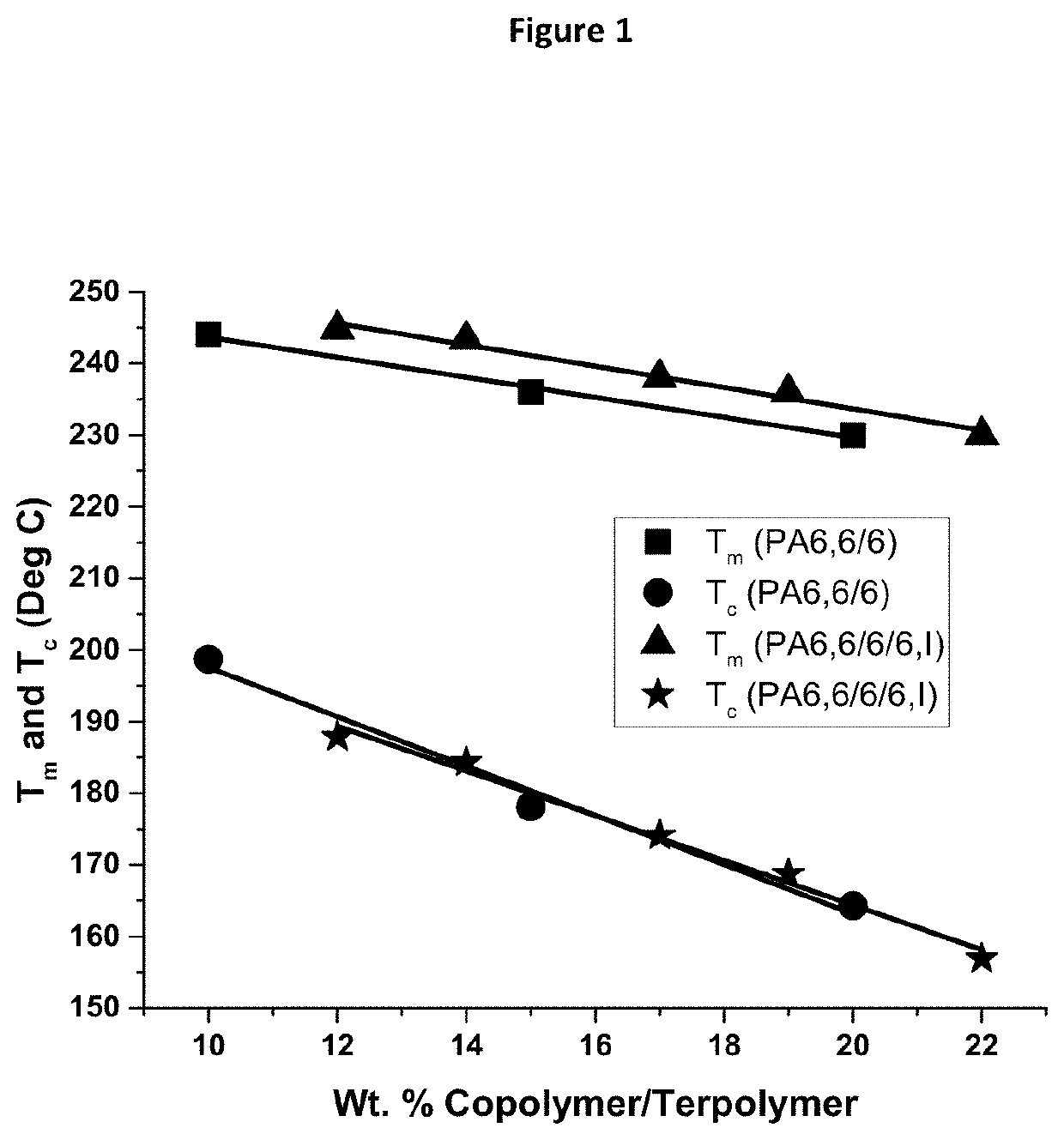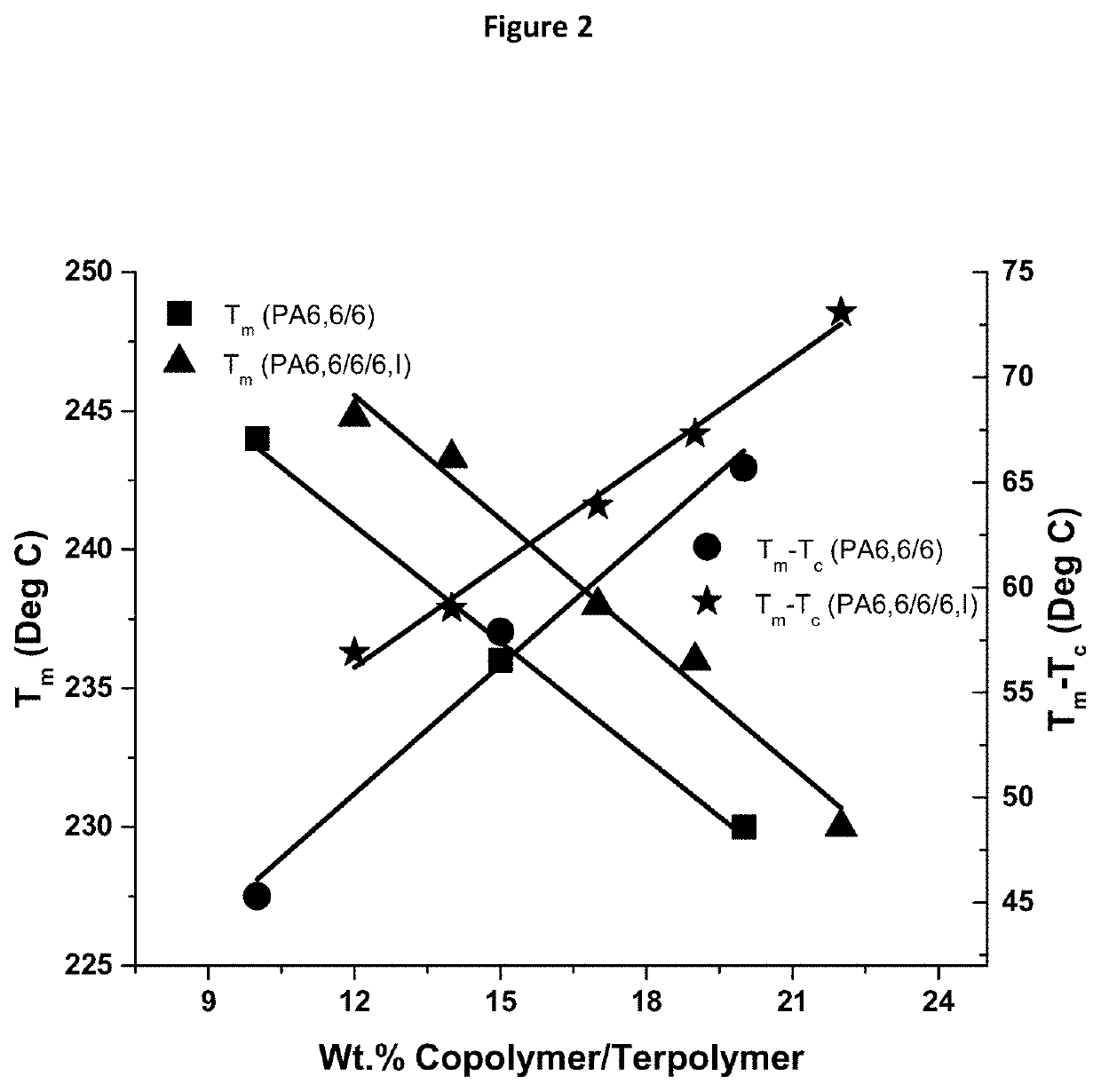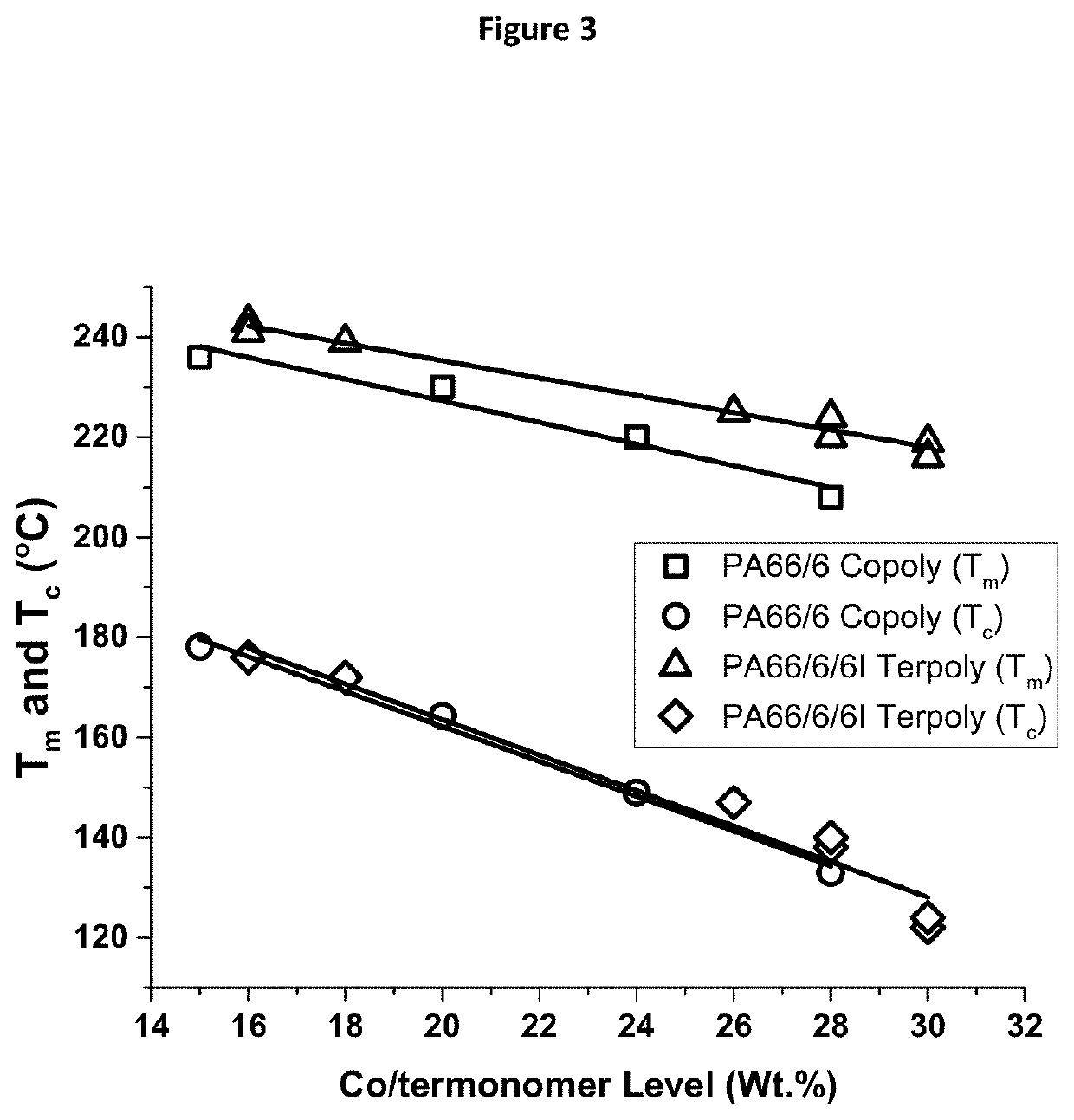Nylon Terpolymers
- Summary
- Abstract
- Description
- Claims
- Application Information
AI Technical Summary
Benefits of technology
Problems solved by technology
Method used
Image
Examples
example 2
aration
[0155]Films of polyamides, copolyamides and terpolymers were prepared by melting through a single screw extruder at temperatures between 230° C. and 300° C. Cast films were prepared by extruding through a slip die and rolling onto a chilled roll through winding. Film thickness was adjusted by adjusting winding speeds and adjusting the die gap. Blown films were prepared by extruding through a circular die and blowing up through an air ring and winding into a final roll. Film thickness was controlled by adjusting the die gap, extrusion speed, stretch ratio (both machine and traverse), and by controlling the air velocity.
[0156]Multilayer blown film was prepared by using a single layer of Nylon within a seven-layer line that consisted of seven separate extruders that feed into a stacked die to result in several multi-layer film multilayer film structures containing one to multiple layers of the polyamide resin of the present invention. In an exemplary embodiment, the components o...
PUM
| Property | Measurement | Unit |
|---|---|---|
| Temperature | aaaaa | aaaaa |
| Fraction | aaaaa | aaaaa |
| Fraction | aaaaa | aaaaa |
Abstract
Description
Claims
Application Information
 Login to View More
Login to View More - R&D
- Intellectual Property
- Life Sciences
- Materials
- Tech Scout
- Unparalleled Data Quality
- Higher Quality Content
- 60% Fewer Hallucinations
Browse by: Latest US Patents, China's latest patents, Technical Efficacy Thesaurus, Application Domain, Technology Topic, Popular Technical Reports.
© 2025 PatSnap. All rights reserved.Legal|Privacy policy|Modern Slavery Act Transparency Statement|Sitemap|About US| Contact US: help@patsnap.com



